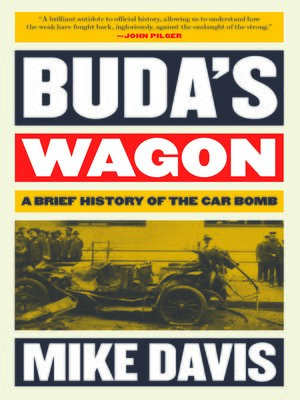
Sign up to save your library
With an OverDrive account, you can save your favorite libraries for at-a-glance information about availability. Find out more about OverDrive accounts.
Find this title in Libby, the library reading app by OverDrive.



Search for a digital library with this title
Title found at these libraries:
| Library Name | Distance |
|---|---|
| Loading... |
On a September day in 1920, an angry Italian anarchist named Mario Buda exploded a horse-drawn wagon filled with dynamite and iron scrap near New York's Wall Street, killing 40 people. Since Buda's prototype the car bomb has evolved into a "poor man's air force," a generic weapon of mass destruction that now craters cities from Bombay to Oklahoma City.
In this provocative history, Mike Davis traces the its worldwide use and development, in the process exposing the role of state intelligence agencies-particularly those of the United States, Israel, India, and Pakistan-in globalizing urban terrorist techniques. Davis argues that it is the incessant impact of car bombs, rather than the more apocalyptic threats of nuclear or bio-terrorism, that is changing cities and urban lifestyles, as privileged centers of power increasingly surround themselves with "rings of steel" against a weapon that nevertheless seems impossible to defeat.
In this provocative history, Mike Davis traces the its worldwide use and development, in the process exposing the role of state intelligence agencies-particularly those of the United States, Israel, India, and Pakistan-in globalizing urban terrorist techniques. Davis argues that it is the incessant impact of car bombs, rather than the more apocalyptic threats of nuclear or bio-terrorism, that is changing cities and urban lifestyles, as privileged centers of power increasingly surround themselves with "rings of steel" against a weapon that nevertheless seems impossible to defeat.







